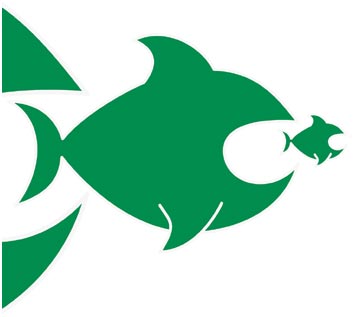Mergers and Acquisitions, one of the most favorite corporate blood-sport, isn’t something unheard of; but it is becoming increasingly frequent in the corporate space right now.
A merger is when two corporate entities come together to form a third, new and distinct identity. An acquisition, is a more aggressive approach where dominant company acquires the other firm with its assets and liabilities whilst retaining its own identity. Of the two, an acquisition can be either friendly or a hostile one, depending on the situation related to buyer and seller.
The recent uptrend in M&A, especially those of acquisitions, can be seen quite evidently irrespective of the sector or industry: Whether its e-commerce, energy, pharmaceuticals or even social media platforms.
So why this sudden upsurge in gulp down of small fishes by larger ones?

WHY GO FOR A MERGER/ACQUISITION?
1. INORGANIC GROWTH:
A merger/acquisition leads to expansion in a firm’s capacities with increase in scale of operations, increased workforce, more assets at disposal, etc. All of this is made possible without an actual increase in output or serving customers. Subsequently, the increased capacity of the firm will eventually lead to increased customer base and better service/supply. This leads to better market share and a dominant position in the market. It also has an impact on economies of scope as more products and /or services can be offered to increased number of customers at the same fixed costs. On the other hand, acquisitions of loss making firms can also reflect on the taxation of the buyer company as it can gain an advantage by showing a reduction in overall profitability.
2. DIVERSIFICATION:
M&A involving integrations, be it horizontal or vertical, is valuable for any organization to either bring down costs and raise margins or reduce competition, respectively. Those M&A involving diversification for the firm, however, is tricky in case it doesn’t click. For example, concentric diversification that is in the same spherical of business is a lot safer than venturing into completely new business. Facebook’s acquisition of Whatsapp was an apt example of the former. What it did for Mark Zuckerberg was it gained him an even more intimate access into messaging platforms used by people and connect it to a larger grid. Facebook is largely accessed worldwide by increasing number of smartphone users on the go and acquiring Whatsapp is a great step towards owning the way people communicate with each other via messaging platforms. Today, Zuckerberg has bought together three of the most popular messaging and sharing social media platforms on Earth under one roof: Facebook, Instagram and Whatsapp.
Vertical integration, for example the recent acquisition of Nokia by Microsoft putting an end to the Finnish handset maker’s legacy, can be a significant motivator for acquisitions. Microsoft, basically a software company, now manufactures mobile handsets (mostly Lumia) giving an edge over its former self.
Flipkart’s acquisition of Myntra last year is also an excellent example of diversification allowing Flipkart to enter the apparel segment in e-commerce space.
A merger or an acquisition, seldom has a single benefit and inadvertently brings in a little of both advantages mentioned above. Take for example, the acquisition of a pharma giant by another which made quite a few rounds in the press: Sun-Ranbaxy deal which was worth $4 billion.
A struggling pharma firm with regulatory issues with FDA, drug recalls, withdrawal of approved licenses and contracts, Ranbaxy was one of the major pharmaceutical companies in antibiotics and OTC products segment. Mr. Dilip Sanghvi, known for his reputation to convert troubled companies into money minting firms, sought this opportunity to buy Ranbaxy in an all-stock purchase along with its $800 million debt. The combined might of these two companies caught the attention of the Competition Commission of India (CCI), the corporate competition watchdog which then suggested certain brands to be sold off to prevent a monopolistic scenario in major therapeutic segments like cardiology. Sun Pharmaceutical Laboratories Ltd. have stronghold in chronic therapies like neuropsychiatry, cardiology and gastroenterology while Ranbaxy prizes itself in the antibiotic and OTC segments of pain, etc. Thus, the strengths and specialties of both these firms are complementary to each other with negligible overlap of products leading to Sun Pharma’s entry into acute and OTC businesses as well. Today, Sun-Ranbaxy deal, which was signed a year ago has been completed, making Mr. Dilip the richest man in India and Sun Pharma the world’s 5th largest generic drug manufacturer and no. 1 Pharma Company in India. In a nutshell, Sun Pharma diversified its product portfolio as well as increased its size of operations by acquiring manufacturing facilities across the globe and workforce of Ranbaxy, and that too at a highly reasonable price.
3. THIN OUT THE HERD:
What better way to minimize competition than to own it? Mergers create an entirely new entity but acquisitions, particularly, have a way of their own of reducing competition. We have had a brief view of what M&A does to the internal environment of a company; what it does to the industrial sector it operates within is that it reduces the number of competitors. The latest merger-cum-acquisition of BG – Shell oil corporations worth £47 billion not only fetched Shell an attractive bid price for BG’s Brazilian liquefied natural gas reserves, but also gave them more space to operate in an already uncomfortable oil sector. Another example of this would be Infosys acquiring U.S. based Kallidus Tech. Inc. for $120 million recently which gives Infosys access to its years of mobile and digital technologies experience.
Usually smaller startups which have rattled the cages of big players in a small timeframe are typical candidates for acquisitions. Some startups these days might even be seen as an opportunity to work in a big company by becoming worthy of being acquired. Although statistics would point that most acquisitions are small fishes gulped down by a big fish, but that’s not always the case. Recently, world’s no. 1 generic manufacturer, Teva Pharmaceuticals offered a whopping $40 billion bid to acquire U.S. based generic pharma manufacturing rival Mylan Pharmaceuticals Ltd. to counter rising competition from India (Sun-Ranbaxy).
So much so for the Big players or the acquirer. What’s in it for the firm being acquired?
Obviously, for one, funds. For some, more than the money, it’s the timing of that money that makes the deal possible. Crunch times of financial instability can really cut a deal which would have been difficult otherwise. Secondly, it gives an opportunity to work with an established company, its image, its management and additional assets which may be allocated after the deal. This is particularly important for smaller startups whose entrepreneurial owners occupy senior management positions in the buyer company. On the downside, the acquired firm may lose its identity or brand image, depending on various circumstances like popularity of other firm, buyer company strategy, etc.
Darwin’s theory, it seems, is not just applicable to living things. “Big will get bigger, small will struggle for survival” seems to be the
rule of the day. Obviously, a good acquisition or a merger doesn’t guarantee success; in fact, statistics suggest otherwise. It all depends on the strategic management of the added ‘weight’ on the buyer: either to increase one’s momentum or get buried under it.
We are moving towards a classical western pattern of industrial rivalry – where there are few but big players in the market controlling how things go about in that particular sector. Many European countries and U.S. have more oligopolistic markets but India, too, seems to be slowly and steadily moving towards the same. It remains to be seen whether such mergers and acquisitions are able to deliver according to the intentions and expectations tied to them.
References:
Bloomberg www.bloomberg.com
The Guardian www.theguardian.com/business/2015/apr/08
Image source: http://www.nature.com/nrd/journal/v5/n12/images
Tags: analysis business business strategy expansion facebook social media strategic decisionYou might like reading:
My Case Discussion Experience @ NMIMS Mumbai, Eeti Agarwal
The following was my experience last year at NMIMS , Mumbai: Group Size- 9 people (5 Males and 4 Females) Balance between people with work experience and freshers Half a page long case 3 member panel: Their only uttered “Start” at the beginning and “Thank you” at the end of the discussion. They would not interrupt even if it a […]

The Chemistry Behind | Lalith Kishore | TEDxNMIMSBangalore
Life is all about perspectives. How would it be if you see the world from the chemistry corner? Each human interaction revolves around chemistry, how well we gel or the way we repel each other.This talk is about how business interactions, friendships, love and a stranger’s eye contact, all revolve around chemistry and how it impacts our world. Lalith Kishore […]






























